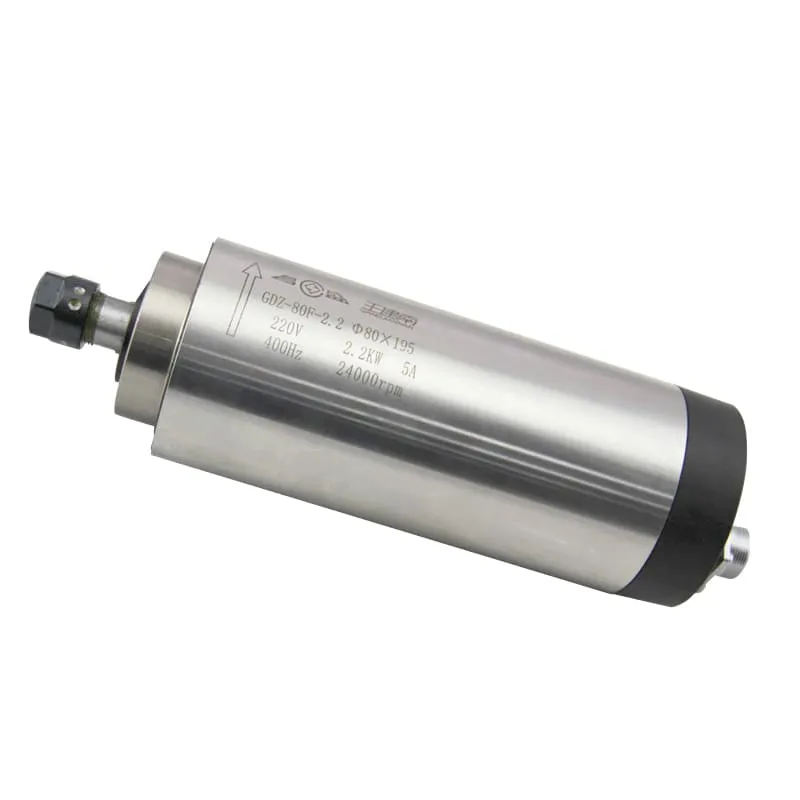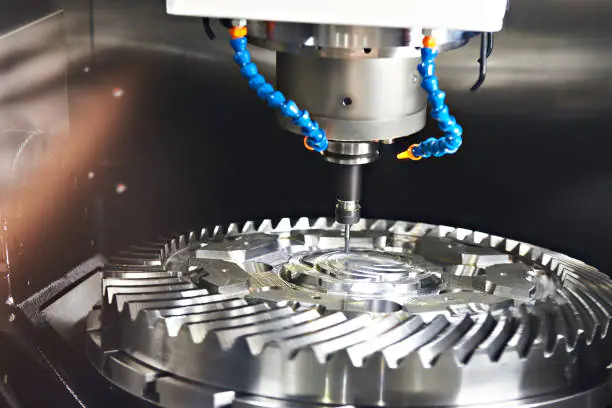How Do You Operate a CNC Machine?
Operating a CNC (Computer Numerical Control) machine requires a combination of technical knowledge, precision, and attention to detail. This comprehensive guide will walk you through the process of operating a CNC machine, from setup to production.
Understanding CNC Machines
CNC machines are automated manufacturing tools that use computer-controlled programs to dictate the movement of production equipment. They are used to create precise parts and components for various industries.

A typical CNC machine setup
Steps to Operate a CNC Machine
1. Preparation and Safety
Before starting:
- Wear appropriate Personal Protective Equipment (PPE)
- Ensure the work area is clean and free of obstacles
- Familiarize yourself with emergency stop procedures
2. Machine Startup
- Power on the CNC machine
- Initialize the control system
- Home the machine axes
3. Load and Set Up Tools
- Select appropriate cutting tools for the job
- Install tools in the tool holder or turret
- Set tool length offsets:
- Measure each tool’s length
- Input measurements into the machine’s control system
4. Workpiece Setup
- Secure the workpiece in the machine’s work area
- Use a vise, clamps, or other appropriate workholding devices
- Set the part offset:
- Determine the workpiece’s zero point
- Input this reference point into the control system
5. Program Loading and Verification
- Load the CNC program into the machine’s control system
- Review the program for any obvious errors
- Perform a dry run or simulation to check for potential issues
6. Machine Setup Verification
- Check coolant levels and pressure
- Ensure proper lubrication of moving parts
- Verify all safety guards are in place
7. Initial Run and Adjustments
- Run the program in single block mode for the first piece
- Make any necessary adjustments to offsets or cutting parameters
- Check the first produced part for accuracy and quality
8. Full Production Run
- Once satisfied with the initial piece, run the program in full automatic mode
- Monitor the machine during operation
- Perform regular quality checks on produced parts
9. Post-Operation Procedures
- Remove finished parts from the machine
- Clean the work area and remove any chips or debris
- Perform any necessary maintenance on the machine
Key Components of CNC Operation
CNC Programming
Understanding CNC programming is crucial:
- G-code: The primary language of CNC machines
- M-code: Used for miscellaneous machine functions
Tool Management
Proper tool management is essential:
- Use high-quality tools appropriate for the material and operation
- Regularly inspect and replace worn tools
- Accurately set tool offsets
Workholding
Secure workpiece holding is critical:
- Choose appropriate workholding devices for the part and operation
- Ensure rigidity to prevent movement during machining
- Consider using custom fixtures for complex parts
Quality Control
Implement quality control measures:
- Use precision measuring tools (calipers, micrometers, etc.)
- Perform regular in-process inspections
- Adjust parameters as needed to maintain quality
Advanced CNC Operation Techniques
1. Multi-Axis Machining
For complex parts, learn to operate:
- 4-axis CNC machines
- 5-axis CNC machines
2. High-Speed Machining
Implement techniques for efficient material removal:
- Optimize cutting paths
- Use appropriate tooling for high-speed operations
3. Adaptive Machining
Utilize advanced features:
- In-process measuring systems
- Automatic tool wear compensation
Troubleshooting Common CNC Issues
- Tool Breakage
- Causes: Incorrect speeds and feeds, worn tools
- Solution: Adjust cutting parameters, replace tools regularly
- Poor Surface Finish
- Causes: Incorrect cutting speed, dull tools, vibration
- Solution: Optimize cutting parameters, check machine rigidity
- Dimensional Inaccuracies
- Causes: Tool deflection, thermal expansion, improper setup
- Solution: Use rigid tooling, implement thermal compensation
- Program Errors
- Causes: Incorrect G-code, syntax errors
- Solution: Carefully review and test programs before full production
Safety Considerations in CNC Operation
Safety is paramount in CNC machining:
- Machine Guarding: Ensure all safety guards are in place and functioning
- Emergency Stops: Know the location and operation of all emergency stop buttons
- Proper Training: Only operate machines you are trained and authorized to use
- Material Handling: Use proper lifting techniques when handling heavy materials or parts
- Chip Management: Be cautious of sharp chips and use appropriate removal methods
Maintaining CNC Machines
Regular maintenance is crucial for optimal performance:
- Daily Checks:
- Clean the machine and work area
- Check coolant levels and quality
- Inspect tools for wear
- Weekly Maintenance:
- Lubricate moving parts as per manufacturer guidelines
- Check and tighten any loose bolts or fittings
- Monthly Tasks:
- Inspect and clean filters
- Check belt tensions
- Calibrate axes if necessary
- Annual Maintenance:
- Perform a full machine calibration
- Replace worn components
- Update software and firmware
Improving Efficiency in CNC Operations
To maximize productivity:
- Optimize Programming: Use efficient toolpaths and cutting strategies
- Implement Quick-Change Tooling: Reduce setup times between jobs
- Use Advanced CAM Software: Leverage simulation and optimization features
- Invest in Training: Continuously improve operator skills and knowledge
- Monitor Machine Performance: Use data analytics to identify improvement areas
FAQ
1. How long does it take to learn to operate a CNC machine?
Basic operation can be learned in a few weeks, but mastering CNC operation typically takes several months to a year of hands-on experience.
2. Can CNC machines run without human supervision?
While CNC machines can run automated programs, they still require human oversight for safety, quality control, and handling unexpected issues.
3. What’s the difference between operating a CNC mill and a CNC lathe?
CNC mills typically work with stationary parts and moving tools, while CNC lathes rotate the workpiece against stationary tools. The basic principles of operation are similar, but the setup and tooling differ.
4. How important is computer skills for operating CNC machines?
Basic computer skills are essential, as CNC machines are controlled through computer interfaces. Familiarity with CAD/CAM software is also beneficial.
5. Can a CNC machine cut any material?
CNC machines can cut a wide range of materials, but the specific capabilities depend on the machine type, tooling, and cutting parameters. Always consult the machine specifications and material guidelines.
6. How do you ensure consistency in CNC-produced parts?
Consistency is achieved through proper setup, regular tool maintenance, consistent material quality, and periodic quality checks with precision measuring tools.
Conclusion
Operating a CNC machine is a skilled task that combines technical knowledge with practical experience. As a CNC operator, you play a crucial role in the manufacturing process, bridging the gap between digital designs and physical products. The ability to efficiently set up, run, and troubleshoot CNC machines is highly valued in industries ranging from aerospace to consumer goods production.
Mastering CNC operation requires a commitment to continuous learning. As technology evolves, new features and capabilities are constantly being introduced to CNC machines. Staying updated with these advancements not only enhances your skills but also increases your value as a professional in the manufacturing industry.
Remember that while the technical aspects of CNC operation are important, soft skills such as attention to detail, problem-solving, and communication are equally crucial. Effective CNC operators are those who can not only run the machines but also collaborate with programmers, engineers, and quality control teams to ensure optimal production outcomes.
Safety should always be your top priority when operating CNC machines. Adhering to safety protocols not only protects you and your colleagues but also ensures the longevity and reliability of the equipment you’re working with.
As you gain experience in CNC operation, you may find opportunities to specialize in certain types of machining or industries. Whether it’s high-precision aerospace components, intricate medical devices, or large-scale industrial parts, there’s a niche within CNC machining that can align with your interests and skills.
The field of CNC machining is dynamic and ever-evolving. By mastering the fundamentals of CNC operation and staying open to new technologies and techniques, you position yourself for a rewarding career in modern manufacturing. Your skills as a CNC operator contribute directly to the production of parts and products that drive innovation and progress across numerous industries.
Remember, every expert CNC operator started as a beginner. With dedication, practice, and a commitment to excellence, you can become a highly skilled professional in this essential field, playing a vital role in shaping the future of manufacturing.

